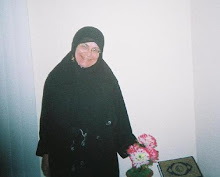Archaeologists Dig Up Roman Bath Complex
 Archaeologists work in Rome,Thursday, July 19, 2007, on the ruins of a 2nd-century bath complex believed to be part of a vast, luxurious residence of a billionaire who gathered his fellow Romans to party and relax. The two-storey complex, which extends for at least 5 acres (2 hectares), includes exceptionally well-preserved decorated hot rooms, vaults, changing rooms with benches, as well as marble latrines and an underground room where slaves lit the fire to warm the baths. (AP Photo/Andrew Medichini)
Archaeologists work in Rome,Thursday, July 19, 2007, on the ruins of a 2nd-century bath complex believed to be part of a vast, luxurious residence of a billionaire who gathered his fellow Romans to party and relax. The two-storey complex, which extends for at least 5 acres (2 hectares), includes exceptionally well-preserved decorated hot rooms, vaults, changing rooms with benches, as well as marble latrines and an underground room where slaves lit the fire to warm the baths. (AP Photo/Andrew Medichini) Slideshow
ROME - A large 2nd-century bath complex believed to be part of a wealthy Roman's luxurious residence has been partially dug up, archaeologists said Thursday.
The exceptionally well-preserved two-story complex, which extends for at least five acres, includes ornate hot rooms, vaults, changing rooms, marble latrines and an underground room where slaves lit the fire to warm the baths.
Statues and water cascades decorated the interiors, American archaeologist Darius A. Arya, the excavation's head, said during a tour offered to The Associated Press on Thursday. Only pedestals and fragments have been recovered.
Arya spoke as students and experts were brushing off dirt and dust from ancient marbles, mosaic floors and a rudimentary heating system, made of pipes that channeled hot air throughout the complex.
"The Romans had more leisure time than other people, and it's here in the baths that they typically spent their time," Arya said. "Because you could eat well, you could get a massage, you could have sex, you could gossip, you could play your games, you could talk about politics — you could spend the whole day here."
However, he added, "to have a bath complex of this size, this scale, it's very unusual."
The complex was believed to be part of a multi-story villa that belonged to the Roman-era equivalent of a billionaire, a man called Quintus Servilius Pudens who was a friend of Emperor Hadrian, Arya said. It was unclear whether the baths were open to the public or reserved for the owner's distinguished guests.
"These people lived a magnificent existence and were able to provide entertainment" to others, said Arya, also a professor at the American Institute for Roman Culture.
Excavations at the Villa delle Vignacce park lasted a total of 10 weeks and will continue, he said. It has not yet been decided whether it will be open to the public.
Ancient Romans put a great deal of emphasis on bathing, turning the art of the soak into a ritual. Meeting at communal bath houses, they went through a series of rooms of alternating temperatures at a leisurely pace, dipping themselves in hot and cold baths. Bathing was a social event as well as a way to purify the body and relax.
Labels: italy, United States















0 Comments:
Post a Comment
<< Home